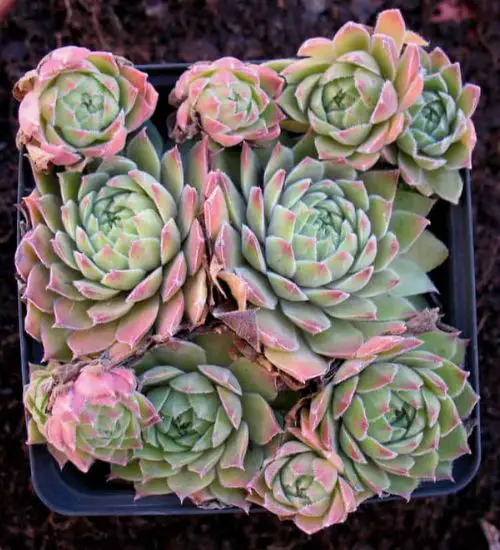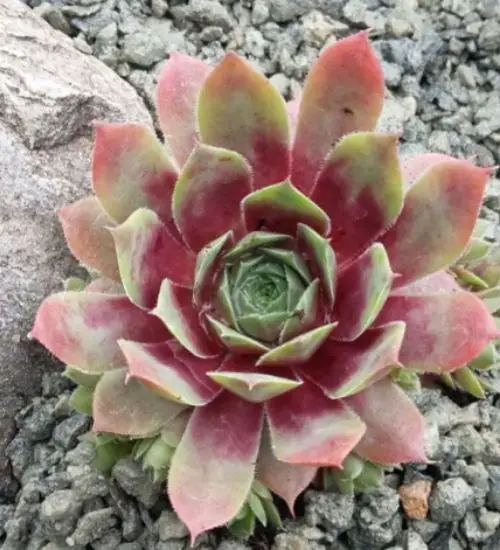Sun: full sun to partial shade
Water: Typical water needs for a succulent
Temperature: Zone 5a from -20° F to -15° F (-28.9 ° C to -26.1° C)
Winter Survival: Cold hardy
Propagation: offsets
Flower: in the late Summer or Fall
Flower Type:
Toxic: Generally non-toxic to humans and animals
Dormant: summer
Space Requirement: Outdoors
Common Problems: Plants may rot if overwatered, pests
Where to buy Sempervivum ‘Neptune’?
Basc Care for Sempervivum ‘Neptune’
Watering
Watering for Sempervivum ‘Neptune’ is a simple task. It requires Typical water needs for a succulent.
One simple tip for you is that you can use some online apps to check the soil status before you go water your succulents. I would recommend the ThePlantsCheck app, it has some nice features there.
Fertilizing
Only feed this succulent during its active growing seasons which means spring and fall. Use the right fertilizer applied in the right amounts. Applying half-strength balanced fertilizer every month or so is recommended for optimal results.
Do not fertilize during summer as the plant is dormant.
Sun & Location Requirements for "Sempervivum ‘Neptune’"
Sempervivum ‘Neptune’ needs full sun to partial shade in order to thrive. While this variety needs plenty of bright light, it is important not to place it in direct sunlight for extended periods of time as this can cause damage or scorching to the leaves and stems. A shadier spot with indirect light could be just what Sempervivum ‘Neptune’ needs.
Sempervivum ‘Neptune’ is known for its cold hardiness and ability to survive in frigid winter temperatures. This succulent's thick leaves and stems help it retain moisture, aiding it in surviving freezing temperatures. Additionally, the succulent's attractive foliage offers a festive touch to any garden in cold climates. With its ability to survive down to 0°F, Sempervivum ‘Neptune’ is an excellent choice for areas with frosty winters.
Sempervivum ‘Neptune’ is an ideal choice for gardens in cold climates. Its thick leaves and stems help it retain moisture, and its colorful foliage adds brightness to any winter landscape. This succulent is renowned for being cold hardy and able to survive temperatures down to 0°F. With its ability to withstand frigid weather, Sempervivum ‘Neptune’ is the perfect addition to any frosty winter garden.
Any succulents in the group will need a large space to grow. You should place your pot outdoor. Since this plant needs a lot of space than other succulents, you should consider not planting them together with other succulents/plants.
Propagation
Succulents can be propagated easily by taking offsets from the mother plant and replanting them in fresh soil. The offset will eventually grow into a new succulent that is identical to its parent.
Toxicity

Sempervivum ‘Neptune’ is generally thought to be non-toxic for humans and animals. However, it is important to note that certain parts of the plant may contain toxins which can cause mild skin irritation if ingested or touched. For this reason, the plant should always be kept away from children and pets.
Pests and Diseases
Sempervivum ‘Neptune’ can be affected common pests and diseases like most of the other succulents such as aphids and mealybugs.
If you do spot any of pest signs, you can treat your succulent using below methods.
- Aphids: quarantine, clean infected plants, soapy water.
- Mealybugs: quarantine, clean infected plants, soapy water.
Besides that, to prevent serious health issues from happening, keep your succulent in a well-ventilated area and check it regularly for any signs of pests or health problems.

